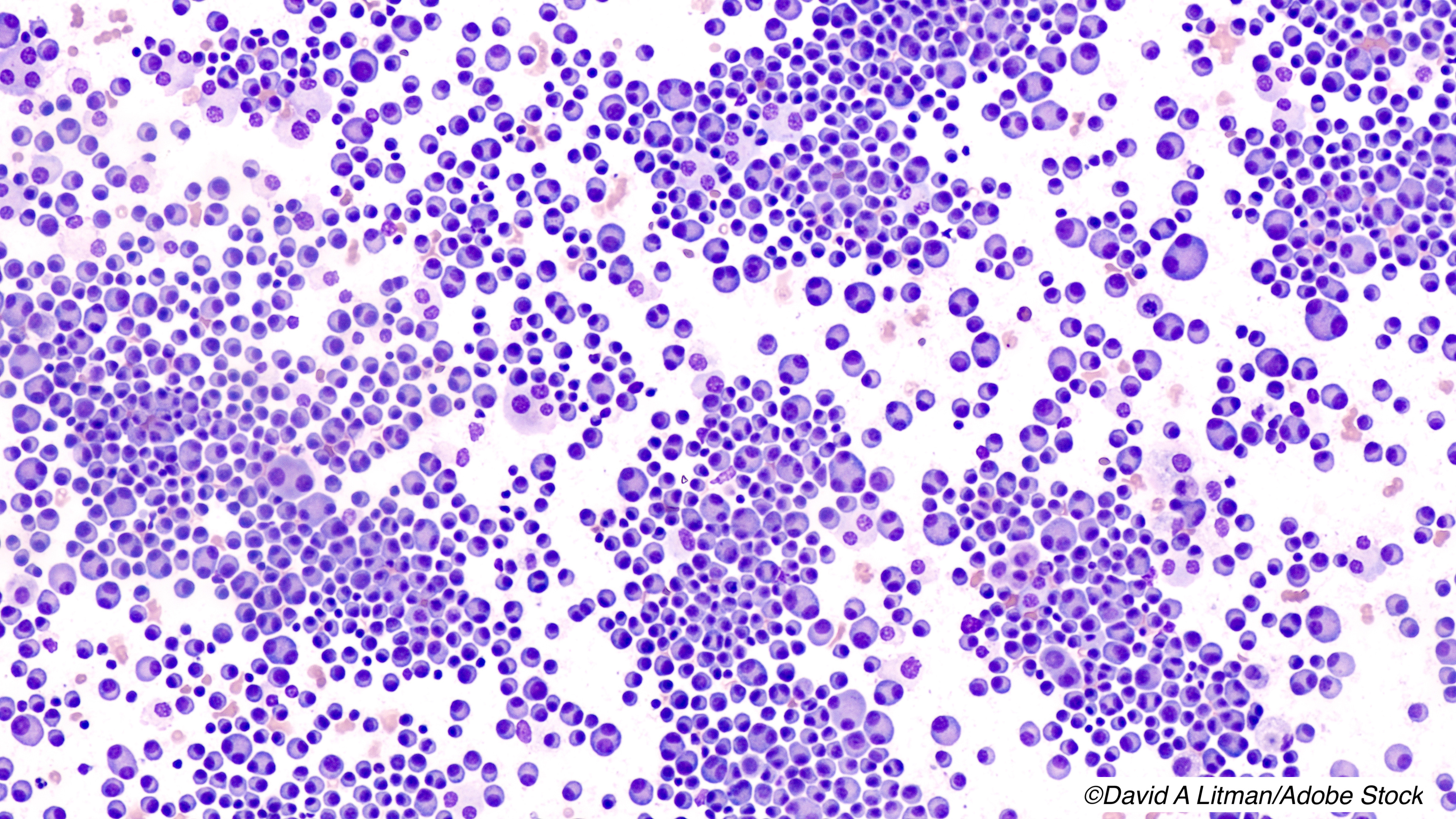The triple combination of selinexor, bortezomib, and dexamethasone resulted in less peripheral neuropathy symptoms than the two-drug combination of bortezomib and dexamethasone in patients with relapsed or refractory multiple myeloma, researchers reported at the 2020 virtual meeting of the American Society of Hematology.
“This is the first trial of a bortezomib-based triplet therapy that showed lower overall and greater than Grade 2 peripheral neuropathy compared with the doublet of bortezomib and dexamethasone,” said Larysa Sanchez, MD, assistant professor of medicine at the Tisch Cancer Center, Icahn School of Medicine at Mount Sinai in New York City. “The regimen requires about 35% fewer clinic visits than the standard twice weekly bortezomib/dexamethasone.”
Patient related outcomes were assessed at baseline and at day 1 of each cycle using the European Organization for Research and Treatment of Cancer quality of life questionnaires, Sanchez explained in her presentation. On the QLQ-CIPN20 questionnaire, which assesses patients experiences of symptoms, functional limitations related to chemotherapy neuropathy and included three subscales — Sensory, Motor, and Autonomic — the 191 patients on the triplet reported lower sensory symptom scores of 5.34 points (P=0.0006) and a 6.6 point improvement in pain scores (P=0.007) compared with the 197 patients being treated with the doublet. However, patients on the triplet did see a 5-point or greater average increase in autonomic symptom scores (P=0.022). While patients in the triple therapy group saw better outcomes in motor symptoms, the difference did not achieve statistical significance.
On the QLQ-C30 — a questionnaire that focuses on physical functioning, role functioning, and pain scales, which were the main pre-specified domains of interest — pain scores among the patients on the triplet regimen were down an average of 6.58 points (P=0.007) compared with the 2-drug therapy.
“The improved pain scores in the selinexor/bortezomib/dexamethasone arm of the trial may be related to superior disease control,” Sanchez suggested.
In the BOSTON Phase 3 trial, the novel triplet therapy of once weekly oral selinexor plus weekly bortezomib and dexamethasone was compared with standard bortezomib plus dexamethasone therapy, and the primary analysis determined that the triplet increased the time of median progression-free survival, increased the time to the next therapy, and had higher overall response rates when compared to the doublet, she said.
Patients were enrolled if they had been previously treated with up to 3 lines of multiple myeloma therapies, but patients with Grade 2 or greater pain from peripheral neuropathy were excluded. There were 402 patients enrolled in the trial and 388 completed the baseline quality of life questionnaires.
Sanchez also reported that the time to symptom deterioration was lower in the patients on triple therapy when it came to pain (P=0.0004), and worsening of motor symptoms also trended in favor of the triple therapy (P=0.0525) — and, while numerically faster time to autonomic deterioration occurred in the triple therapy group, that difference failed to reach statistical significance (P=0.3727).
“In the setting of a significant increase of progression-free survival and time to next therapy, patients with multiple myeloma after at least one prior therapy who received weekly selinexor/bortezomib/dexamethasone reported lower sensory system and pain scores but higher autonomic symptom scores,” Sanchez said. “This supports a potentially improved patient experience and decreased health care burden and long-term morbidity.”
In commenting on the study, Wasif Saif, MD, deputy physician-in-chief and medical director, at Northwell Health Cancer Institute, Lake Success, New York, told BreakingMED, “Myeloma-related peripheral neuropathy is very complex and not fully known. It has been attributed to many things, including damage to nerves caused by the monoclonal protein secreted by myeloma cells, bone damage which can compress the nerve roots in the spinal cord, amyloid light-chain amyloidosis, and the rare POEMS syndrome.
“About 20% of patients have neuropathy at the time of diagnosis of myeloma,” he added. “Though few of these patients may have pre-existing neuropathy secondary to diabetes or autoimmune diseases, many of these patients have neuropathy associated with a precursor of myeloma, called MGUS [monoclonal gammopathy of undetermined significance].”
In addition, Saif said, “Many drugs to treat, especially proteasome inhibitors, cause neuropathy as an adverse effect. The incidence and severity of treatment-related neuropathy is directly related to the dose and duration of therapy.”
To minimize neuropathy, he said, “First and foremost, baseline evaluation of the nerve damage should be assessed in each patient. Early assessment establishes a baseline against which to measure new or progressive symptoms and signs.”
Modifying/reducing the dose and/or schedule of the drug associated with neuropathy can reduce the impact of neuropathy on the patient, Saif noted. For example, bortezomib can be given either intravenous or subcutaneously and frequency can be weekly to biweekly — both can be selected based on the symptoms of nerve damage.
He added that neuropathic drugs to reduce nerve pain and related symptoms can also be employed, such as gabapentin, pregabalin, duloxetine, amitriptyline, nortriptyline. Topical agents such as lidocaine patch or lidocaine ointment, capsaicin cream, or menthol cream can also be used. Saif noted that cannabidiol, the non-psychoactive compound in marijuana, and THC (tetrahydrocannabinol), the principal psychoactive compound, may be useful in reducing neuropathic pain. Neuroprotective supplements may help in some patients, including pyridoxine (Vitamin B6), Vitamin B12, L-glutamine, L-carnitine, and others, he concluded.
-
Peripheral neuropathy in relapsed or refractory multiple myeloma patients appeared to be less severe with an active triple combination of selinexor, bortezomib, and dexamethasone compared to the two-drug combination of bortezomib and dexamethasone.
-
These findings were presented at a medical meeting and should be considered with caution until these results are published in a peer-reviewed journal.
Edward Susman, Contributing Writer, BreakingMED™
The trial was sponsored by Karyopharm.
Sanchez disclosed no relevant relationships with industry.
Saif disclosed no relationships with industry.
Cat ID: 331
Topic ID: 98,331,393,728,791,730,332,468,130,331


